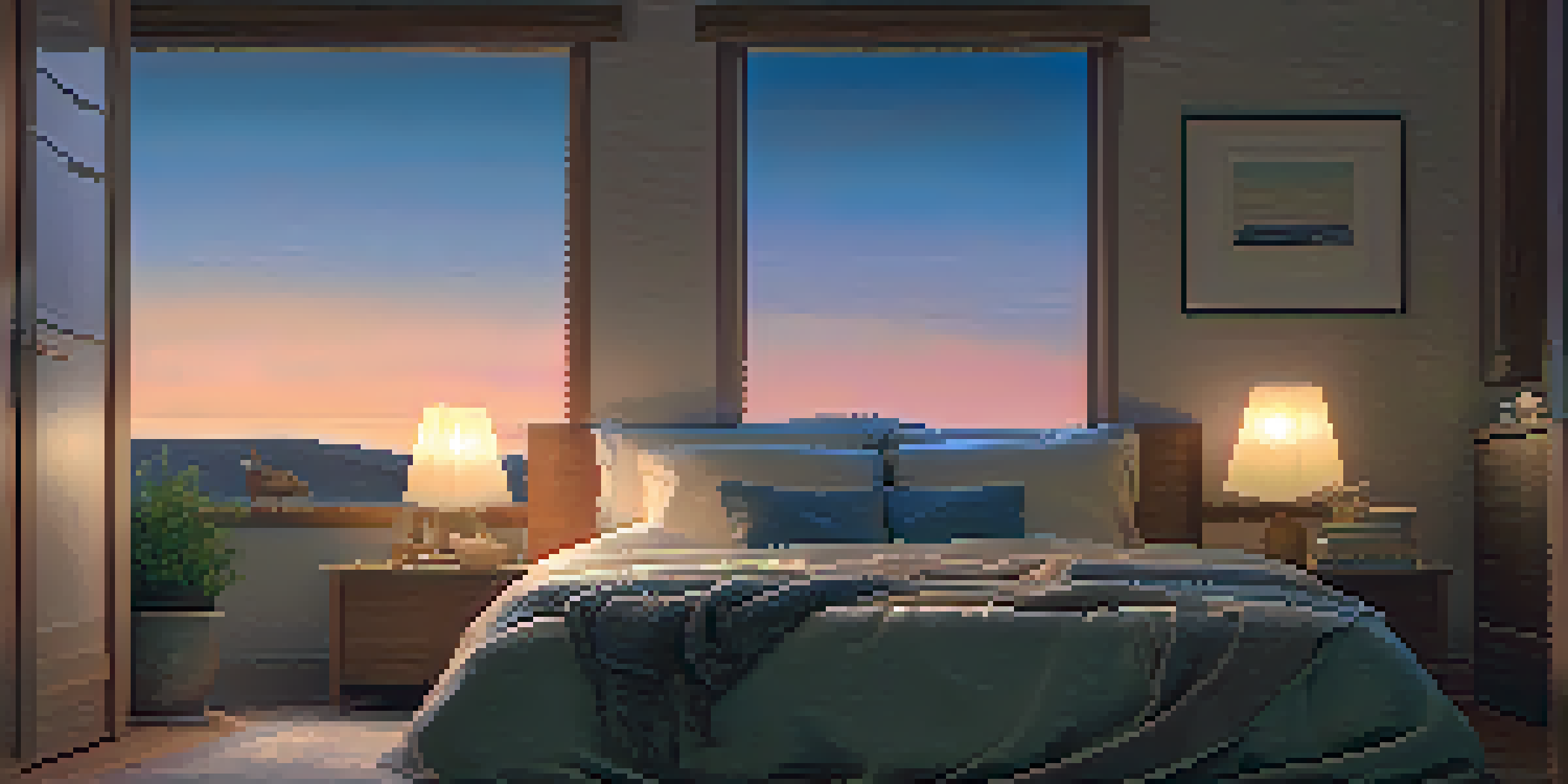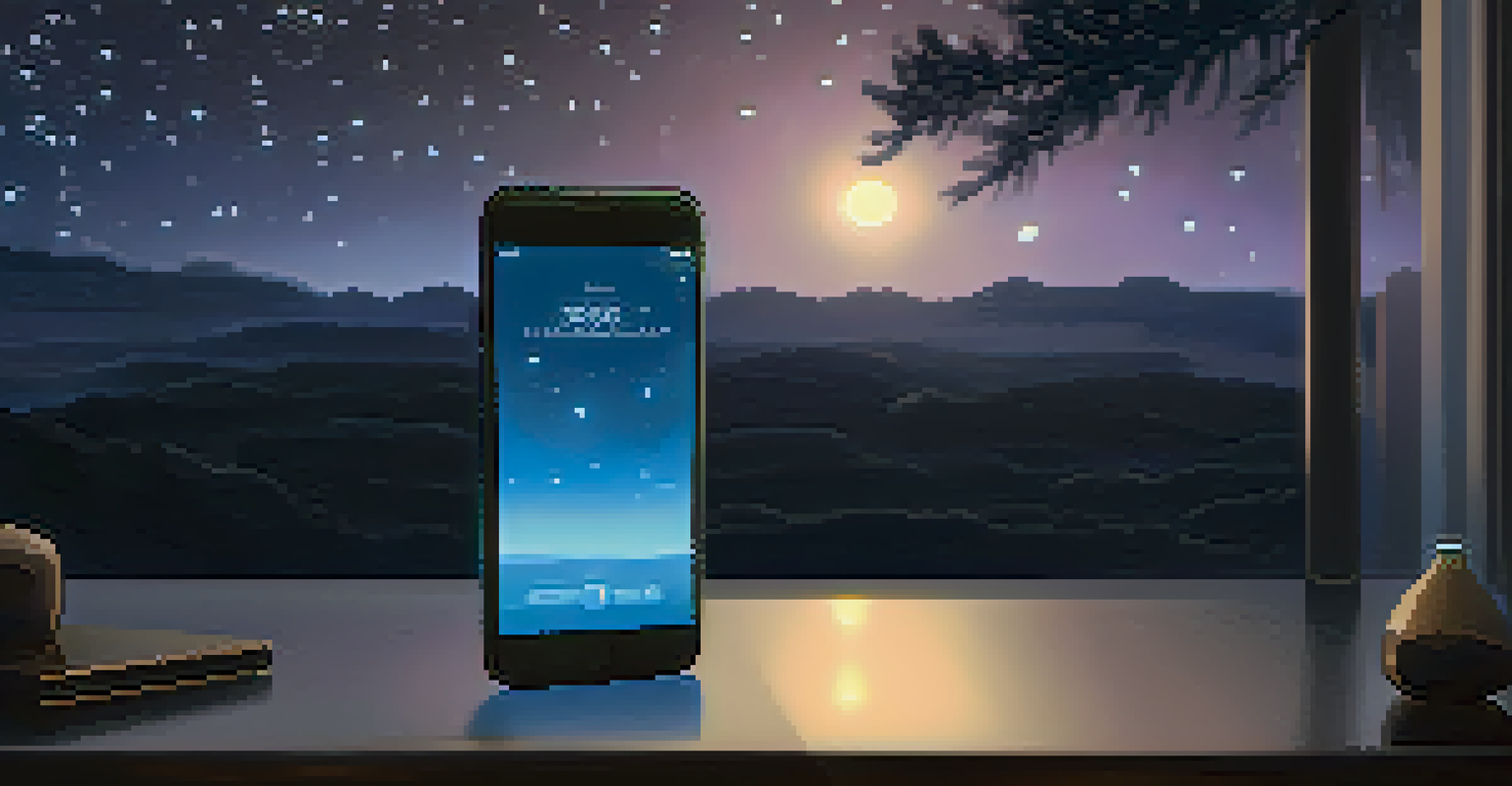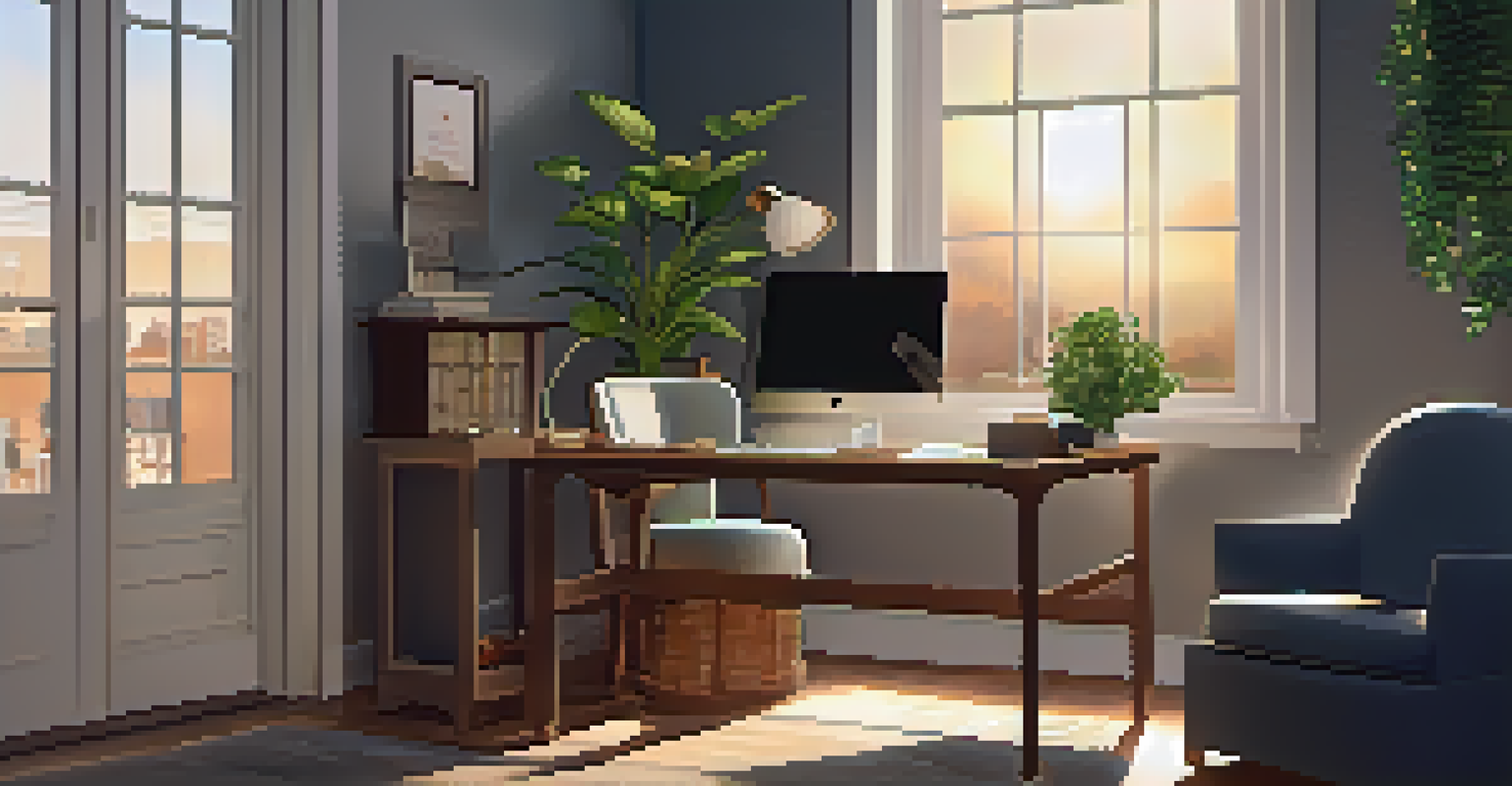How Blue Light from Devices Impacts Sleep Quality and Patterns

What is Blue Light and Where Does It Come From?
Blue light is a high-energy visible light that is emitted by various devices such as smartphones, tablets, and computer screens. This type of light is also naturally present in sunlight, which helps to regulate our circadian rhythms. However, the increase in screen time, especially in the evening, has raised concerns about its effects on sleep quality.
The light that we are exposed to during the evening can greatly affect our ability to fall asleep and stay asleep.
As we spend more time on our devices, especially during nighttime, our exposure to blue light increases significantly. This can lead to disruptions in our natural sleep-wake cycle, making it harder to fall asleep when we finally decide to put our devices down. Understanding where blue light comes from is essential in addressing its impact on our sleep.
While blue light helps boost alertness and mood during the day, excessive exposure at night can throw our bodies off balance. This is because our brains interpret blue light as a signal that it is still daytime, which can hinder the production of melatonin, a hormone responsible for regulating sleep.
The Science Behind Blue Light and Sleep Disruption
Research has shown that blue light exposure in the evening can inhibit melatonin production, making it difficult to fall asleep. Melatonin is often referred to as the 'sleep hormone' because it signals to our bodies that it's time to rest. When we use our devices before bed, the blue light emitted can trick our brains into thinking it’s still daytime.

This disruption in melatonin levels can lead to a variety of sleep issues, including insomnia or poor sleep quality. Imagine trying to fall asleep while the sun is shining brightly; it’s a similar struggle when our devices keep emitting that blue light. The result is a cycle of fatigue and restlessness, making it challenging to wake up refreshed.
Blue Light Disrupts Sleep Quality
Exposure to blue light, especially at night, can hinder melatonin production, making it harder to fall asleep and affecting sleep quality.
In essence, the science behind blue light and sleep disruption highlights the importance of managing our screen time, particularly in the hours leading up to bedtime. Simple adjustments can make a big difference in how well we sleep and how we feel during the day.
How Blue Light Affects Different Sleep Patterns
Blue light not only affects how quickly we fall asleep but also impacts the overall quality of our sleep. Studies indicate that individuals who use screens before bed may experience less REM sleep, which is crucial for cognitive functions like memory and learning. This lack of quality sleep can lead to feeling groggy and unfocused the next day.
Sleep is the best meditation.
Furthermore, the timing of blue light exposure can affect sleep patterns differently. For instance, late-night scrolling on social media may lead to fragmented sleep, making it difficult to reach the deeper sleep stages that are essential for feeling rested. It’s akin to running a marathon without ever getting a break; your body doesn’t get the recovery it needs.
Understanding the effects of blue light on sleep patterns can empower individuals to make healthier choices. By recognizing how our evening habits influence sleep, we can create a more conducive environment for rest and recuperation.
Signs That Blue Light is Disrupting Your Sleep
Many of us may not realize that our sleep issues could be linked to blue light exposure. Common signs include difficulty falling asleep, waking up frequently during the night, and feeling tired even after a full night's rest. If this sounds familiar, it might be time to evaluate your screen time habits.
Another telltale sign of blue light disruption is waking up groggy or having trouble concentrating during the day. It’s as if you’ve been running on empty, unable to perform at your best. If you find yourself reaching for caffeine more often than usual, it could be a signal that your sleep quality needs attention.
Signs of Blue Light Impact
Common indicators of blue light disruption include difficulty falling asleep, waking up frequently, and feeling tired even after a full night's rest.
By being aware of these signs, you can take proactive steps to mitigate blue light exposure in the evening. Making small changes can lead to significant improvements in your overall sleep quality.
Practical Tips to Reduce Blue Light Exposure
If you’re looking to improve your sleep quality, there are several practical steps you can take to reduce blue light exposure. One effective method is to set a specific cut-off time for screen use in the evening, allowing your body to unwind before bedtime. Consider replacing screen time with relaxing activities such as reading a book or practicing mindfulness.
Using apps or settings that filter blue light on your devices can also significantly reduce its impact. Many smartphones and computers now come equipped with night mode features that warm the light emitted from the screen, making it easier on your eyes as the day winds down. It’s like swapping out harsh fluorescent lighting for a cozy lamp.
Lastly, investing in blue light-blocking glasses can be an excellent option for those who need to use screens in the evening. These glasses filter out harmful light, allowing you to enjoy your devices without compromising your sleep quality.
The Role of Sleep Hygiene in Managing Blue Light Effects
Sleep hygiene refers to the habits and practices that promote consistent, uninterrupted sleep. By incorporating good sleep hygiene into your routine, you can mitigate the effects of blue light exposure. This includes keeping a consistent sleep schedule, creating a calming bedtime environment, and minimizing screen time before bed.
Imagine your sleep routine as a ritual: dimming the lights, lowering the volume on devices, and engaging in calming activities can all signal to your body that it’s time to wind down. Good sleep hygiene combined with reduced blue light exposure can create a powerful synergy that enhances your overall sleep quality.
Tips to Reduce Blue Light Exposure
Practical steps like setting screen time limits, using blue light filters, and establishing good sleep hygiene can significantly improve sleep quality.
Additionally, establishing a tech-free zone in your bedroom can further reinforce healthy sleep habits. By keeping devices out of reach, you’ll be less tempted to scroll through your feeds and more likely to enjoy restorative sleep.
The Future of Blue Light Research and Sleep
As technology continues to evolve, so does our understanding of blue light and its effects on sleep. Ongoing research aims to uncover the long-term implications of our increasingly digital lifestyles. This could lead to new recommendations and tools to help us navigate our relationship with technology and maintain healthy sleep patterns.
Emerging studies are exploring how different wavelengths of light affect our sleep cycles, which may lead to innovative solutions that mitigate the negative impacts of blue light. For instance, new lighting technologies may be developed to provide the benefits of light during the day while filtering out disruptive wavelengths at night.

By staying informed about the latest research, we can make better choices regarding our screen time and its impact on our well-being. The future holds promise for finding a balance between technology use and quality sleep.